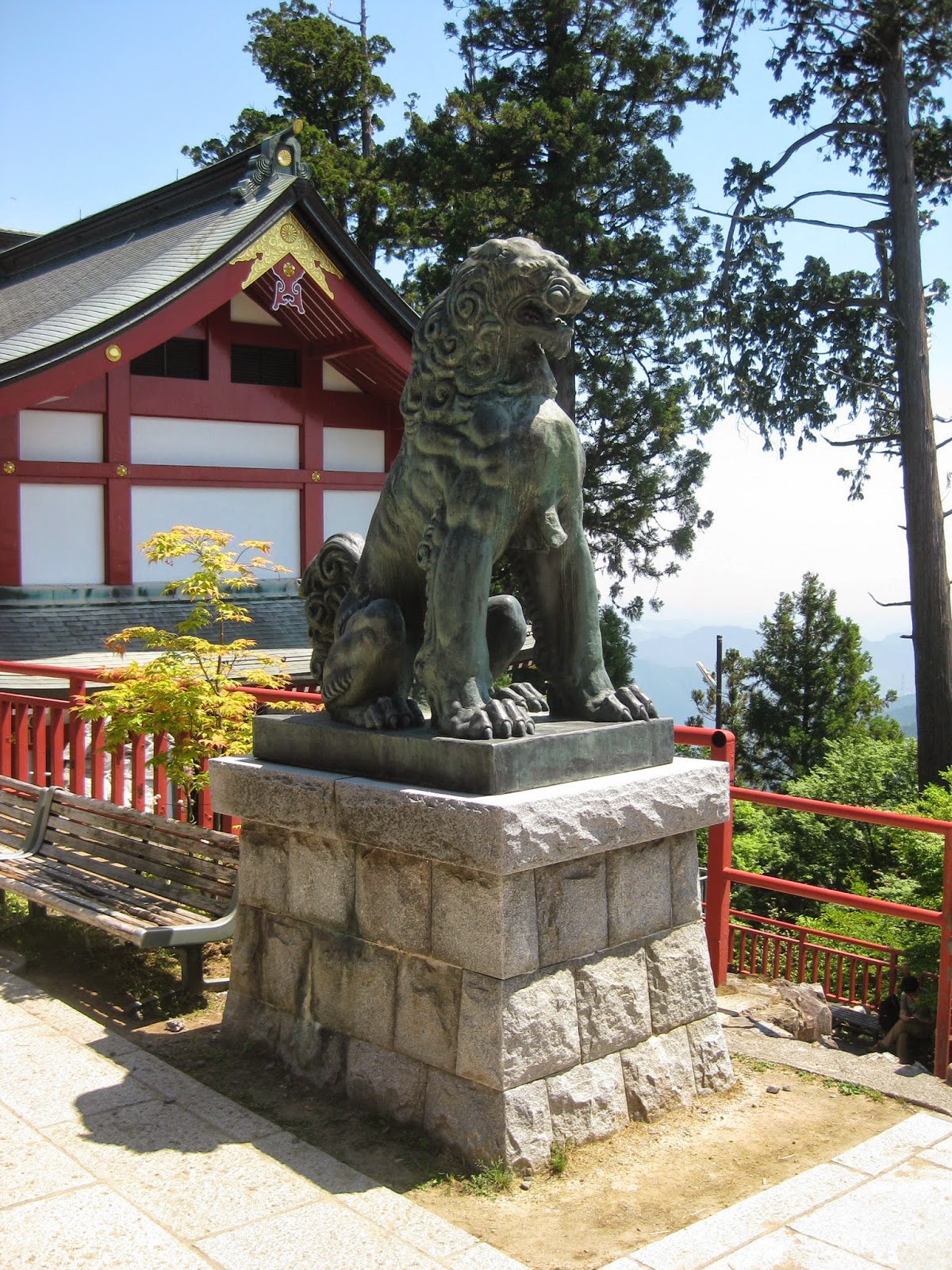Spend enough time in Tokyo and there’s a good chance certain
aspects of daily life will start to irk you. Maybe it’s the daredevils who ride
their bikes on the sidewalk, oblivious to the danger posed to pedestrians. Perhaps
you encountered a human wave at one of the mega-stations like Shinjuku, or you simply
walked out the wrong exit and spent an infuriating twenty minutes searching for
the place you came to see.
A fine place to escape the irritations of the capital is Mount
Mitake, which lies in the Oku-Tama region a couple of hours to the west. As the
train empties and you leave the urban sprawl behind, you sense the stress dissipating
from your body and mind. Beyond Ome, a single-track railway takes you through a
lovely valley. The mountains on either side are blanketed in green trees, with
some empty patches where plantations have been chopped down.
It is best to arrive late in the afternoon, when the heat has
subsided and the steep, switchback road up to the mountain hamlet is very
quiet. The climb takes about an hour, through a shaded forest of arrow-straight
and very tall cryptomeria trees. You’re unlikely to have much company, although
you’ll probably have to pause to allow a few men on scooters to pass on their
way downhill.
Mitake is hiking country, and in the morning hundreds of
Japanese arrive, many having ascended the mountain by means of a cable car.
There are a number of well-marked routes through the woods that start from the
not very inspiring shrine at the top of the hamlet, although you may find
yourself wondering why you missed heavily advertised spots like the Rock Garden
and Ayahiro Waterfall. Occasionally there’s a break in the tree line and the
surrounding mountains or a distant hamlet in the valley far below come into
view. In these moments it’s not hard to believe that Japan was once a truly
beautiful country, before it was ravaged by war and crash
industrialization.
Finding your way around the small community on Mount Mitake
is not that simple. Most signs are in Japanese, and it’s a mercy that there are
a handful of large maps in European script upon the walls. Just before the
shrine there is a very short ‘shopping street’, where you can eat soba, udon
and other overrated Japanese dishes, or maybe treat yourself to some wasabi
root or knick-knacks such as decorative hiking staffs, chopsticks, miniature
owls, and carved wooden Buddhas.
Those intending to stay overnight can find lodgings in
Komadori Sanso, a hard-to-find inn dating to 1776 (‘As old as America’,
observed one of my fellow foreign guests). You know you’re in the right place
when you see a large piece of paper with your name on it attached to the
entrance of a white building. The inn boasts a wonderful cypress bathtub,
albeit one you must share with fellow bathers. A surprisingly tasty traditional Japanese dinner
is served in a room of tatami mats, sliding doors decorated with shadowy
mountains, and extremely low tables. Bring earplugs and prepare to hit your
head.




